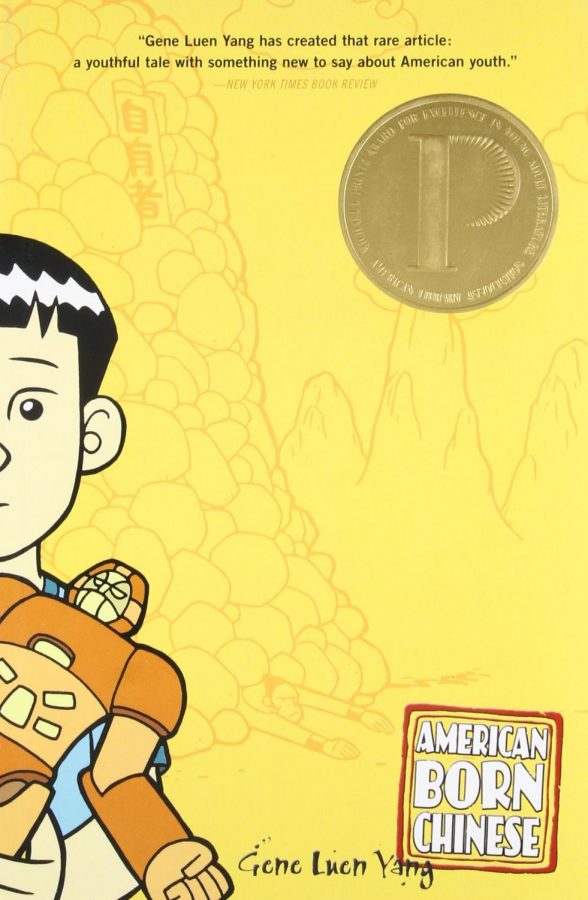Is the implementation of graphic novels in the English 9 curriculum a good thing?
Image courtesy of amazon.com. Cover of Gene Luen Yang’s American Born Chinese, the graphic novel freshmen are currently reading for English class.
December 12, 2018
It’s five minutes until the end of lunch, and you desperately wait as Sparknotes loads on your phone. You’re hurrying to read the summary of another boring piece of literature in preparation for the discussion next class. To be honest, you could have read the book ages ago, but it’s so tedious that why even bother? Instead of a classic piece of literature, what if you had a quick-to-read, entertaining graphic novel? Now that’s the stuff.
For the first time at Jefferson, the entire ninth grade is analyzing a graphic novel, in this case Gene Luen Yang’s American Born Chinese. Students have been questioning the addition of such a “simple” type of material to a typically rigorous curriculum. However, graphic novels aren’t just “simple.” In fact, they increase student participation and add diversity to the educational program, making the implementation of a graphic novel unit a truly revolutionary prospect for both freshmen and English 9 teachers at Jefferson.
The first main upside to graphic novels is the effect it has on student concurrence. A study done in 2017 by Publisher Weekly found the inclusion of a graphic novel section in libraries increased average overall library circulation by more than 30%. There’s no denying it. Students love graphic novels. Publisher Weekly speculates that being typically shorter than traditional novels and using pictures in addition to words to advance the plot, are driving causes for students to read graphic novels for pleasure.
If the William Golding’s and Shakespeare’s made way for graphic novels, class discussions would be so much more impactful. The amount of students who I’ve seen drifting off during literature discussions who have avidly dove into our graphic novel conversations are immense. Increasingly, Sparknotes simplifications and Wikipedia summaries would be things of the past, and motivated, excited students would populate English classrooms. There is a clear correlation between graphic novels and increased student activity that is overlooked by so many students and teachers, and it’s about time we realized the potential graphic novels hold.
If that weren’t enough to justify the inclusion of graphic novels in the English 9 curriculum, then how about the diversity it brings to the classroom? As a student, I know the repetitive message received from almost every teacher about “always thinking outside of the box” and “being innovative.” Analyzing a graphic novel does just that. Panel size, angling, repetition, coloring, shading, font, font size, the list goes on and on of “outside of the box” analyzation opportunities specific to graphic novels.
It’s time to push past the boundaries of classroom norms, and be the innovative school we claim to be. Using graphic novels in our English classrooms is neither “childish” nor “ineffective” as it has been consistently claimed. In fact they’re quite literally the opposite, and it’s time for the educational value of graphic novels to spread beyond Freshman English and inspire Jefferson students for years to come.






